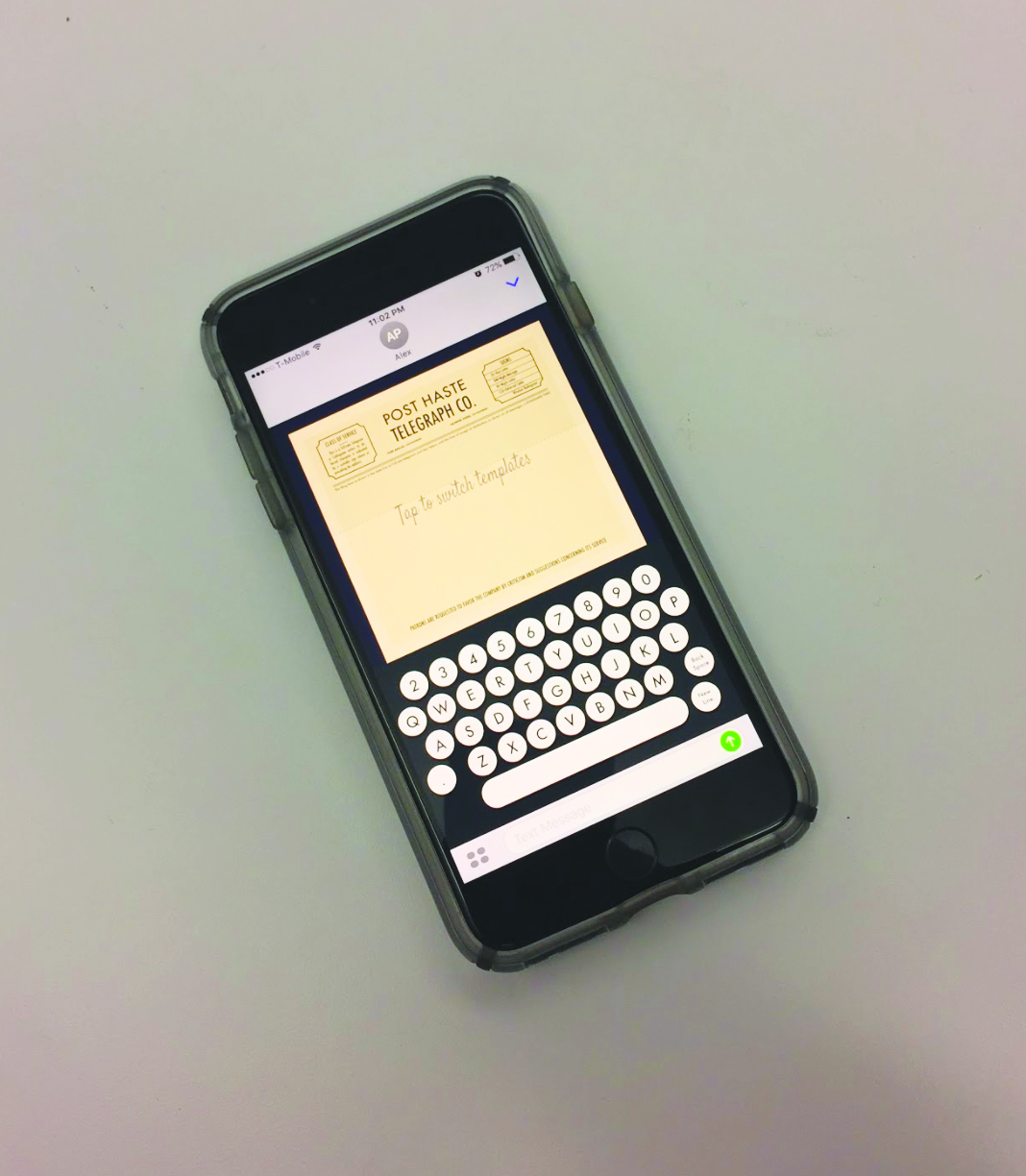
As more and more people become focused on the latest technology, three Yale alums are keen to bring a blast from the past.
Teletype, an app developed by Yuri Ahuja ’15, Hunter Ford ’15 and Nick Gonzalez ’15, is an iMessage extension that allows users to send virtual telegram messages. After downloading the app, users are able to create text messages formatted like old telegram designs, adding a “vintage” feel to modern communication. Besides the default telegram design, which is based on a 1940s telegram Ford uncovered in his parents’ attic, customers are able to purchase additional formats for 99 cents each. The app renders the telegram message as an image, meaning that recipients do not also need to download the app in order to view the message.
An early version of the app was launched on April 3 and is available in Apple’s App Store.
“Teletype was more of a fun side project that Hunter came up with based on his long-standing love for anything vintage,” Ahuja said. “I liked the idea and have been working with him and another friend from our senior society, Nick Gonzalez, to produce and launch it, though Hunter deserves the lion’s share of credit for the entire process.”
In January, Ford approached Ahuja to begin working on the app. Together, they settled on the idea of updating telegrams for the smartphone era and got to work. As an iMessage extension, Teletype works alongside iMessage sticker packs and other add-ons. Ford said that the newest version of the app will be released next week with added updates.
Pressing the send button will insert the virtual telegram directly into the user’s current text conversation. While the recipient does not need to have Teletype installed to view the message, those with an iPhone running iOS 10 or higher will automatically be prompted to install “Teletype” after tapping on the telegram. If they already have Teletype, they can view the telegram in full screen and compose a reply in the same format.
In the new edition, the app’s keyboard will feature a few other quirks based on telegraph industry practices from the mid-20th century. Ford said that for example, an “=” will be used to designate a new line and the word “STOP” will be used in lieu of a period.
“By the time I graduated, I had realized that old-fashioned technology could bring delight to others at Yale aside from vintage geeks like me,” Ford said. “And although working on a tech startup has been a thrill and an incredible privilege, I’ve missed that experience of sharing vintage delight with others.”
Ford noted that downloading and sending Teletype telegrams via iMessage is free. Other telegram reproductions available in the app include Imperial German, Soviet Express, U.K. Royal Mail and Irish telegrams, all of which are based on historical designs.
Entering Yale, Ford’s passions were classics and bookbinding. After taking “Introduction to Programming” his freshman year, he fell in love with the class and decided to major in computer science. As he did so, Ford indulged his love of bookbinding on the side, co-founding the Yale Guild of Bookmakers and helping re-establish the Silliman Bindery.
“For me personally, the primary motivations behind this project are: working together with two awesome Yale friends, doing something I love and engaging with something that fascinates me,” Ford said.
Gonzalez, a front-end software engineer at Snap Inc., said he enjoys building web apps and taking on side projects with friends. When the idea for Teletype came around, he said, he treated it as an opportunity to lay the foundation for later projects and for each of the members to learn new skills.
Similarly, though Ahuja is currently pursuing a joint M.D./Ph.D. in biostatistics and bioinformatics at Harvard Medical School, he said he realized that math and computer science played more to his strengths and interests. Beginning his senior year, he started working on coding the app for a startup idea with Ford. He added that personally, the main motivations for him were also working together with two close friends and producing an app others would enjoy using.
“I’m under no illusions that Teletype will shake up the campus or make a lasting impact on the Yale community,” Ford said. “I do see it, however, as a part of, and a response to, the story of rising interest in vintage, analog and old-fashioned technology on campus.”







